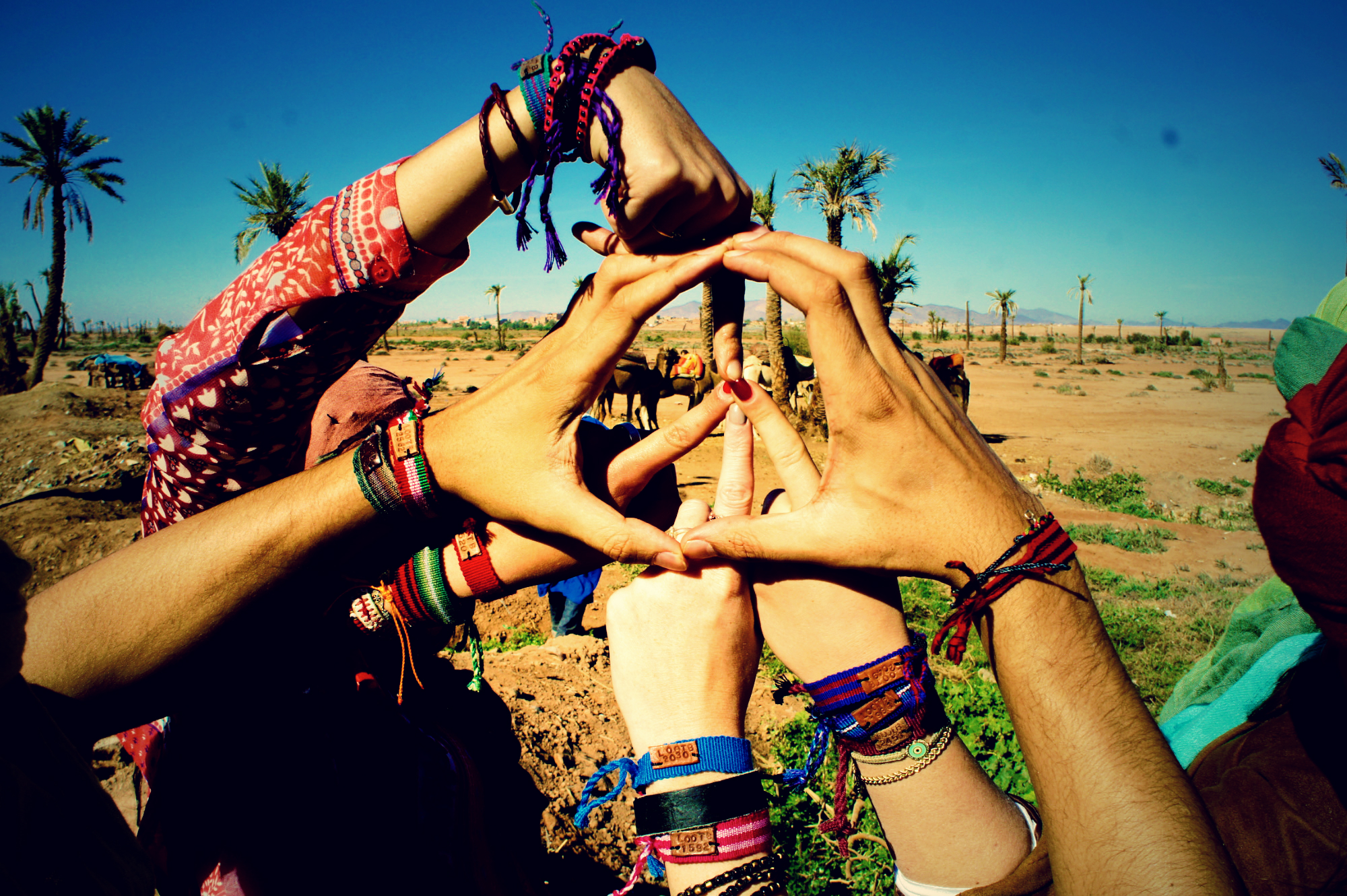Life Out Of The Box
Dream Life: Quinn & Jonathon from LOOTB
• This story is part of our new series: Dream Life where we interview travelers that bucked the norm and created a dream life for themselves on the road. We’ll find out exactly how they were able to escape the rat race and their advice for all of us sitting at home, wishing we were in their shoes. *
For many people, us included, a dream job would include lots of traveling, something that gives back to the community, something entrepreneurial where we could be our own boss. Well Jonathon and Quinn have really ticked all of those boxes with their project- Life Out Of The Box. This social venture they created in 2012 allows them to travel throughout the world, developing relationships with local artisans to sell their wares on their website, LOOTB.com. The profits from the bracelets go to buying school supplies for local children. Pretty badass, huh? We “sat down” with Quinn & Jonathan (ie. exchanged a number of emails) and asked them about how they started their project as well as their advice for would-be travelers who want to dich their jobs to follow their dreams.
Tell us a little bit about your project.
In May 2012 we left California to create a Social Venture. We bought a one-way ticket to Nicaragua not sure what we were going to create. After 6 months we created a business where we sell handmade products and for every product that we sell we give a child in need school supplies. The unique part of our business is that we show the customer the exact child that we gave school supplies on behalf of the customer through our website.
What inspired you to start this adventure?
Before we left for Nicaragua we constantly asked ourselves what our definition of success is. We quickly realized that to us it goes far beyond just making money– to us it was all about seeing the world for what it is and creating a business that helps others pursue their dream. We figured that life is all about the journey and we knew that we would regret not going after our dreams more than we would regret going even if we completely failed.
“Live your dreams & take risks. Life is happening NOW.”
What advice can you give people who are interested in ditching their normal life and exploring the world?
Just go for it. Do a lot of research on the different places that you want to live in and then figure out how you can make it happen. We knew that Nicaragua was the perfect place for us after spending hours on the computer looking up all of our different options. Also: SAVE YOUR MONEY. The way that we were able to quit our jobs, fund ourselves to create a social venture and live overseas was by budgeting and saving our money. Even when we travel we travel on a big time budget. To us, it’s not about having things it’s about having memories and the ability to pick up and go see a new place whenever we want. Once you’re out there, you’ll realize that it doesn’t actually cost as much as you think to see the world. If it’s within you to go out and see the world, DO IT. Just go. You don’t have to have it all figured out, you can learn as you go. Never let waiting become a habit. Live your dreams & take risks. Life is happening NOW.
What has been one of your most rewarding or favorite memories during your time on the road?
Our favorite memory has got to be giving school supplies to the very first child in Nicaragua, Naomi. We had just launched our store of handmade products from Nicaragua online and made our very first sale to a woman in Washington. Right away, we went out to the streets of Masaya (a industrial town with very little tourism, mostly all locals) and saw Naomi with her mom walking from school back home. When we gave her the school supplies she started dancing and smiling with pure joy in the dirt road. It was a moment that neither of us will ever forget.
Favorite travel/life quote?
“We travel not to escape life but for life not to escape us.”
What is in store for the future of LOOTB?
We’re excited to have expanded our line and giving into Africa and we continue to keep on expanding to other countries. We actually just gave school supplies to a school of children in a small village in Kenya, Africa. We’re looking into working with artisans as well as NGOs in other countries around the world like Nepal, Peru and various parts Southeast Asia. We are planning to also head back to Central America in the summer to check up on things and work with our partnered NGOs to give more school supplies away.
How can our readers help/ get involved?
We love hearing from anyone who connects with our story or Life Out of the Box in anyway, so we encourage anyone to reach out to us online. Readers can support us by following and interacting with us on our social media sites (Facebook, Instagram, Twitter, YouTube, & Pinterest), following us on our blog or even by just telling our story to your friends and family in person! To purchase a LOOTB bracelet you can visit our store www.lootb.com.
